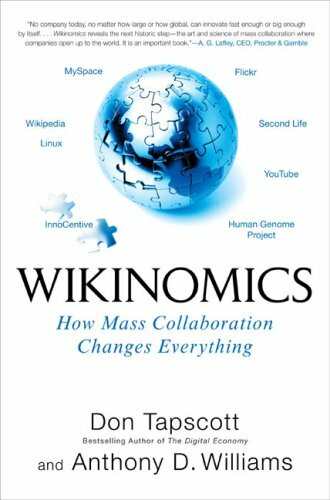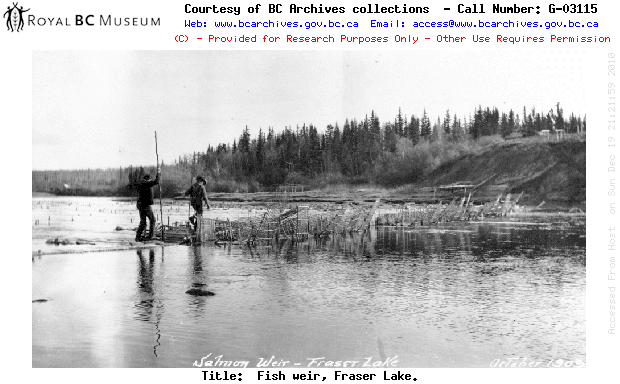.
How about this for 2011…? The opens their ‘science’ to anyone that’s interested. They put a call out for a contest to anyone to devise a better system of in-season salmon management.
They base this system on initiatives such as Proctor and Gamble’s initiative, which is tagged as an “open innovation strategy”. Rather than relying only on internal research and development, P&G has opened up their product development to any outsider that’s interested.
Also in 2011, Canada’s (DFO) starts an initiative called: WikiSalmon.
What is it?
Well… in an incredible turn of events, DFO opens their process of “managing” salmon and in turn reduces the financial sucking noise emanating from their overly inflated ‘senior manager’ salaried workforce based in Ottawa (that real hotbed of salmon spawning and migration).
Throughout the range of Pacific salmon, impassioned folks (referred to as the Gumboot Army) are setting out across thousands of cricks, creeks, streams, and lakes looking at salmon habitat, counting salmon, evaluating inputs and outputs from salmon ecosystems — and entering all of this information onto their computer, and in turn onto the worldwide web — similar to (one of the more impressive open source projects online).
As opposed to a $15 million+, legal-heavy, DFO-heavy, paper-producing, ‘fisheries science’-heavy, preeminent expert-laden process of an ‘inquiry’ — the B.C. and Canadian government, the states of Alaska, California, Oregon, Washington and Idaho, and the US federal government fund a: Citizen’s Assembly on Wild Salmon.
The Assembly utilizes technology as much as possible cutting down on travel (teleconference, etc.) and has dedicated teams in each state and province that travel to as many small communities as possible to let people know about the Assembly and get information from average everyday folks about salmon in their area. (citizen science at work)
This info-gathering process utilizes a ‘wiki’-like format, rarely utilizes “panel-like” processes where public speaking and presentations is a must. (did you know that public speaking ranks higher than the fear of death for the majority of folks in the western world?).
Instead, more encouraging formats such as , or , or my absolute favorite: sitting at the kitchen table… are the most-relied upon for gathering info.
About this point, some folks reading this may be wondering what was in my Christmas shortbread cookies or holiday brownies…
_ _ _ _ _
If you haven’t heard the term “open source” or aren’t too sure what it means — it doesn’t really matter… What I can guarantee you though, is that this term will continue to become much more familiar to many in the near future.
Many already are — especially with the current fuss over WikiLeaks.
If you’ve been reading any of the multitude of books emanating from the ‘business’ section at the bookstore, or Amazon, or the library — “open source” is probably quite a familiar term, as are success stories of this approach.
Furthermore, if you’re reading this blog post you are benefiting — well… utilizing — open source software. WordPress has been an immensely successful open source project. As has Wikipedia.
If you’re using Firefox as your web browser: open source.
Pretty good chance that when you’re at work the computer servers are running on Linux: more open source. (Linux is the ).
Or, web servers running on Apache: it’s been developed open source.
If you don’t want to get sucked into buying Microsoft crap, go with . It’s been out for ten years now.
_ _ _ _ _ _
Think it’s just a technology thing then read about Canadian gold miner Goldcorp (or companies like Proctor & Gamble and others). These stories are told at length in the very successful book: .
There’s a shorter version from a 2007 by the authors of the book:
A few years back, Toronto-based gold mining company Goldcorp was in trouble. Besieged by strikes, lingering debts, and an exceedingly high cost of production, the company had terminated mining operations.
Conditions in the marketplace were hardly favorable. The gold market was contracting, and most analysts assumed that the company’s fifty-year old mine in Red Lake, Ontario, was dying. Without evidence of substantial new gold deposits, Goldcorp was likely to fold.
Chief Executive Officer Rob McEwen needed a miracle. Frustrated that his in-house geologists couldn’t reliably estimate the value and location of the gold on his property, McEwen did something unheard of in his industry: He published his geological data on the Web for all to see and challenged the world to do the prospecting.
The “Goldcorp Challenge” made a total of $575,000 in prize money available to participants who submitted the best methods and estimates.
Every scrap of information (some 400 megabytes worth) about the 55,000 acre property was revealed on Goldcorp’s Web site. News of the contest spread quickly around the Internet and more than 1,000 virtual prospectors from 50 countries got busy crunching the data.
[…]
But Goldcorp isn’t a dot-com kind of company. Mining is one of the world’s oldest industries, and it’s governed by some pretty conventional thinking. Take Industry Rule No. 1: Don’t share your proprietary data. The fact that McEwen went open-source was a stunning gamble. And even McEwen was surprised by how handsomely the gamble paid off.
[…]
The contestants identified 110 targets on the Red Lake property, more than 80% of which yielded substantial quantities of gold. In fact, since the challenge was initiated, an astounding 8 million ounces of gold have been found—worth well over $3 billion. Not a bad return on a half million dollar investment.
Today, Goldcorp is reaping the fruits of its radical approach to exploration. McEwen’s willingness to open-source the prospecting process not only yielded copious quantities of gold, it introduced Goldcorp to state-of-the-art technologies and exploration methodologies, including new drilling techniques, and data collection procedures, and more advanced approaches to geological modeling.
This catapulted his under-performing $100 million company into a $9 billion juggernaut while transforming a backwards mining site in Northern Ontario into one of the most innovative and profitable properties in the industry.
_ _ _ _ _ _
Hmmm… open source, innovation, and citizen science fully utilized to better look after wild salmon? Quite a thought.
Thousands of people reading open scientific articles, newspaper articles, and the like and then sharing these through various open source and social media venues. (sidenote: Facebook just passed Google as the number one most visited site in the world).
These days if average joe and jill want to read scientific articles… forget it. They are protected behind their peer-reviewed electronic walls, remaining the domain of the preeminents and annual subscription paying folks with various letters behind their names.
Want to access Fisheries and Oceans science or decision-making rationale… the ‘science’ and ‘decisions’ paid for by citizens… gotta go through “Freedom of Information” legislation.
Want to look at data from salmon farmers on the BC Coast, practices that potentially endanger wild salmon (as they have anywhere else open-pen salmon farms have been operated), and that utilize First Nations traditional territories and public lands and waters — nope, got to go through legal challenges.
_ _ _ _ _
One of the biggest barriers?
In my humble opinion… demographics.
Much of the senior civil service is occupied by… well… more ‘senior’ individuals (many approaching retirement in coming months and years)
The demographics of Canadian politicians … well… more ‘senior’, with an average age of 55.
I recognize I dance a dangerous razor edge here… I don’t mean to be ‘age-ist’; more suggestive of diversity in looking to solutions.
At a “digital economy” conference in 2009, Canadian Heritage Minister James Moore (part of the more ‘senior’ contingent) (in regards to digital copyright laws) and is a fitting conclusion to this post:
The average age of a Member of Parliament is 55…
And you’d be surprised the number of Members of Parliament who have never held an iPhone, who couldn’t tell you, functionally, how a Blackberry works and have no idea how these things integrate.
The old way of doing things is over. These things are all now one. And it’s great and it’s never been better and we need to be enthusiastic and embrace these things.
I point out the average age of a member of parliament because don’t assume that those who are making the decisions and who are driving the debate understand all the dynamics that are at play here. Don’t assume that everybody understands the opportunities that are at play here and how great this can be for Canada.





































